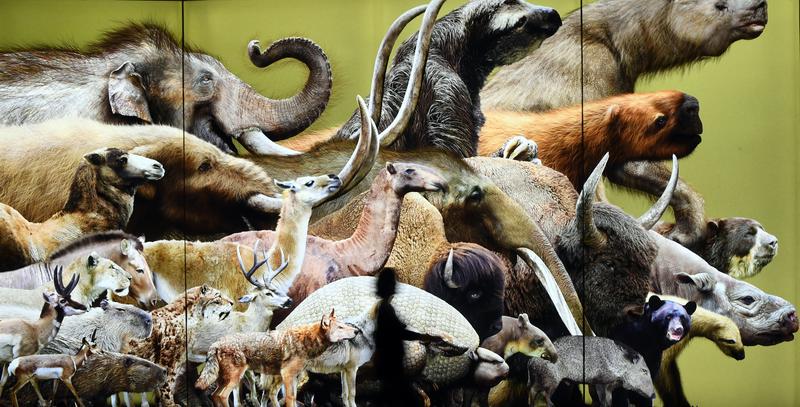Turning Back The Clock: Pleistocene Park
By | August 10, 2019

In a remote corner of eastern Siberia along the Kolyma River, a grand experiment has been underway since the 1990s. Its short term objective is to turn back the historic clock and restore a slice of the ice age. The project’s ultimate goal is to stave off the worst of the seemingly inevitable results of climate change.
The project’s name: Pleistocene Park.

During the last ice age which ended some 12,000 years ago, a northern grassland dominated the continents from Spain to Canada. This historic grassland often referred to as the “mammoth steppe,” was the equivalent of the modern-day tropical savannas of Africa. But where today’s savannas are occupied by elephant, rhinoceros, and herds of ungulates, the mammoth steppe was dominated by a wooly mammoth, wooly rhinoceros, and other cold-weather megafauna. These large species kept forests in check and grasslands to thrive.
These megafaunas died out at the end of the last ice age with several hypotheses as to why such as climate change or overhunting by humans. Regardless of the reasons, the outcome was that the vast biome of the northern grasslands died with those animals which were replaced by forest and more primitive species of plant.

A team of scientists led by the father and son duo Sergey and Nikita Zimov studied the benefits of the mammoth steppe and how that historic ecosystem could help solve some of Earth’s climatic problems. The main crux of their argument is centered on preventing the warming of the permafrost. This permanently frozen layer of soil has trapped methane which when released could seriously speed up global warming.
The Zimovs and others contend that restoration of large grazers will resurrect the northern grassland and will mitigate global warming. Snow insulates permafrost and if the snow layer is removed, as is done by grazers through foraging and trampling, it allows for more thorough cooling. In addition, grasses have deeper root systems then what are in the Arctic tundra today and would help sequester excess carbon dioxide from the atmosphere. An added benefit is also an albedo effect -- grasslands reflect more light than forest and other existing vegetation which would keep down temperatures as well.

The first enclosure of Pleistocene Park was built in 1996 with 125 acres of land. Yakutian horses were introduced as well as moose. While the numbers of grazers were low, the team used artificial means to crush vegetation as if woolly mammoths were present. Some of this early research has borne out, showing how the permafrost was better preserved. Grasses began to dominate.

In the early 2000s, the park was expanded to six square miles. Reindeer were introduced. These became the largest group of hoofed animals in the park. Then in 2010 and 2011 muskoxen and European bison were introduced. After some more expansion in the 2010s, the park now boasts 13 bison, 15 cold-weather Kalmykian cows (to substitute for the extinct aurochs), up to 15 moose, 4 musk ox, 30 reindeer, 18 sheep, 8 yaks, and 25 Yakutian horses. While this is not much, it is key to remember that Pleistocene Park is a small experiment. The dream of those who run Pleistocene Park is to create a belt of grassland not just in Siberia, but across the world. To do this would eventually require the introduction of millions of grazers across millions of square miles.

What backers of Pleistocene Park probably dream of most is a resurrected woolly mammoth. This is not entirely out of the question. Of extinct species, the woolly mammoths remains are the most ubiquitous and corpses are often found frozen within the permafrost. If intact DNA can be obtained from these specimens and implanted within living elephants for cloning, it is possible to bring back this species. This is proving hard to do with scientists attempting to produce an Asian elephant - woolly mammoth hybrid. It is unlikely that Pleistocene Park will see woollies romping through its grasslands any time soon.

Likewise, the project has received criticism from scientists, especially in its introduction of non-native species to act as surrogates for extinct megafauna. Some contend that this could have vast, unintended negative consequences for the ecology of the region. Sergey Zimov noted that any large megafauna could be easily removed, unlike smaller fauna that may prove problematic, such as Australia’s historic problem with rabbits and cane toads.
Despite these criticisms, the potential positive benefits of Pleistocene Park are considerable. However, if the project is successful then acquiring and developing the large swath of land necessary to make a global impact would be very challenging indeed.

